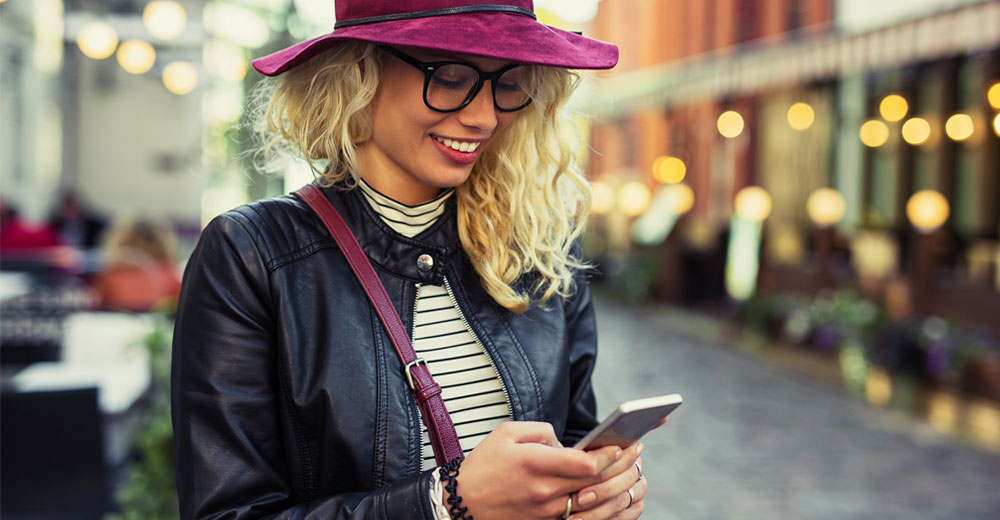As e-commerce has gained serious momentum over the past 10 years, there have been dire predictions about the impending death of brick-and-mortar retail.
The narrative has been framed largely as “technology is killing retail,” but the reality is not quite so simple. While technology undoubtedly has transformed the retail landscape, it also has been pushing the industry forward to create new kinds of customer experiences. Technology may be killing retail, but it could be saving it as well.
More than 12,000 stores shuttered in 2018, according to estimates by commercial real estate firm Cushman & Wakefield.
A wide assortment of retailers — from Toys ‘R’ Us to Best Buy to Sears to Gap — have been closing and filing for bankruptcy in droves. At the same time, others — like Target and Walmart — have been thriving. Some businesses that started out in e-commerce have opened up brick-and-mortar stores: Warby Parker, Glossier, Bonobos, and even Amazon. These companies wouldn’t invest in a physical footprint if they didn’t believe the strategy would pay off.
The issue, then, is not that physical retail is irrelevant. Rather, the retailers that succeed offline are those that embrace the online space and use it to enhance their customer experience, while those that struggle have failed to adapt to this new, digital world.
Sears is an example of this. It attempted to replicate what Amazon was doing and build an online marketplace. However, this moved the company away from its core business without improving the shopping experience, and Amazon’s experience was still better. Meanwhile, Target, Walmart, and even Best Buy have succeeded through technology deployments that benefit consumers.
The recent evolution of retail has made it clear that technology is an important part of succeeding in today’s market but using “technology for technology’s sake” just doesn’t cut it. Retailers have to think creatively and thoughtfully about how to blend online and offline experiences and address specific customer pain points. Following are six predictions about technology’s impact on retail in 2019.
1. Influencer Marketing, Social Media Takeover
Influencers have been taking over the world — or at least the marketing world. This relatively new phenomenon has been gaining steam steadily, along with the rise of platforms like Instagram. In 2019, it will hit an inflection point. Brands across industries and sizes will begin incorporating influencers in their marketing campaigns and retail experiences.
Non-celebrity bloggers are 10 times more likely to influence an in-store purchase than celebrities, suggests a survey conducted by Collective Bias. That’s a dramatic difference.
Seventy percent of millennial consumers are influenced by the recommendations of their peers in buying decisions, the same survey also found.
Today’s shoppers place a premium on authenticity and less value on traditional gatekeepers or tastemakers. They respond to people they can relate to and spend far more time on social media than previous generations, who didn’t have it as an option.
Brands can leverage these shifts by working with influencers on social platforms to get the word out about new products and raise brand awareness — but that’s just the beginning. Brands also can use the wealth of data held by social media platforms to segment and target consumers with offers, incentives, and promos. Features like a “buy button” embedded into social media apps enable them to capture moments of interest and turn them into purchases.
“Buy buttons” enable customers to make frictionless purchases from within social apps. In 2019, we will see retailers providing these types of one-click experiences through direct purchases from advertisements across display, search, and video. Shoppers will see an ad and be able to buy the product through one-click or voice command without having to go through multiple e-commerce checkout steps.
2. Bigger Emphasis on ‘Have It Your Way’
As much as today’s consumers value authenticity, they also value personalization. Younger shoppers especially do not respond to a one-size-fits-all approach. They were raised with the “have it your way” mentality and want to buy things that make them feel special and unique and that reflect who they are.
All the buyer data out there has made it possible for retailers to surface products tailored to a customer’s shopping history and interests. Amazon excelled early on with personalized recommendations, and online advertisers have leveraged data to send targeted, personalized ads.
In 2019, more retailers are going to start using personalization in brick-and-mortar stores. Because we carry our phones with us everywhere, it’s possible for brands to engage shoppers with personalized, digital content when they are out and about. Furthermore, the actual retail experience will become more personalized through capabilities like dynamic pricing.
3. More Options and Flexibility
Personalizing the retail experience also means providing more flexibility around how items are purchased and picked up or delivered. One of the reasons people buy so much from Amazon is convenience — they pay with one tap, and the purchase shows up at their door.
That said, the majority of shopping still takes place offline. Consumers appreciate being able to see items and try them on. They like the immediacy of walking out of a store with an item in hand and the experience of shopping itself. What they don’t like is waiting in long lines or having to lug large packages around with them.
This is why the future of retail includes giving customers a full range of options so they can buy online and pick up in-store or buy in-store and have items delivered. The checkout experience will become increasingly blended, customized, and seamless across channels.
Moreover, retailers will try out new ways of improving in-store experiences with things like self-checkout, so customers who may have bought something online and then added items to their cart in-store wouldn’t have to wait in lines. The most compelling retail experiences are those that combine the best of both worlds.
4. More Mobile-Assisted Checkouts and Payments
One aspect of the checkout experience that will evolve in 2019 is the greater penetration of mobile payments. With players like TenCent and Alipay waiting in the wings (both juggernauts in China), U.S. retailers need mobile payments to stay relevant. This is one reason mobile payments on smartphones and smartwatches are likely to gain significant ground in mainstream America this year. Just as debit/credit card acceptance led to a decline in cash usage, mobile payments will begin to eclipse credit cards.
Another reason mobile payments are set to soar is that people are now more comfortable checking out with their Starbucks and Amazon apps. Starbucks’ mobile order-and-pay system accounted for 12 percent of all U.S. transactions, the company reported.
This trend has paved the way for people to embrace paying with dedicated retailer apps in-store. These retailer apps will merge payment, promotions, and loyalty (like Kohl’s Pay), which will increase adoption among regular shoppers in particular. “Scan and buy” features will gain ground as well, allowing shoppers to point at items they see in the store and then buy them online from that retailer.
Furthermore, peer-to-peer payments will gain steam in 2019. This method isn’t just for millennials anymore, and more retailers will start accepting payment types like Venmo and Square Cash or both for online and in-store transactions.
5. Experiments With Augmented Reality
The trends outlined above already have been edging toward mainstream adoption, whereas the following two are in a “test and learn” phase, meaning some retailers will try them out on a small scale as an experiment before they experience wider adoption.
The first in this category is augmented reality or AR. Brands, including Sephora, Lacoste, and Magnolia Market, experimented with AR in 2018, allowing consumers to test makeup, try on clothes, and see how furniture would look in their homes, respectively. More retailers likely will dabble in AR this year.
The infrastructure is partly there, as more than 90 percent of consumers use smartphones while shopping in a physical store, and retailers can deliver AR content via mobile.
AR is a great way to deliver more information about an item, such as product specs and reviews. It also can deliver personalized offers, including promotions, options for financing and payment, dynamic pricing, product bundles, and reward programs.
6. Shift to Smaller Store Footprints and Virtual Aisles
Lastly, AR will enable another trend that is tied to larger economic forces: smaller store footprints supplemented with virtual aisles. Real estate is expensive, as is maintaining a physical store. Even retailers that are doing well have been downsizing to save money and be more efficient with their costs.
Smaller store footprints inevitably mean a reduction in the amount of in-store inventory. Retailers can use mobile devices and augmented reality to create virtual aisles that allow people to shop a larger online inventory while in-store and see more options for colors, sizes, etc.
In addition, brick-and-mortar stores will evolve into experience centers geared toward engaging customers and showcasing the brand rather than closing sales then and there. For example, Vans has a skatepark in a London store, Ikea has hosted in-store sleepovers, and Glossier has nailed highly Instagrammable pop-up experiences. The idea of a “store” is fundamentally changing.
2019 is shaping up to be a great and exciting year for retail, driven by innovative and forward-thinking about what customer experiences can be.















































Mobile payments are recently becoming more popular including business awareness about online payments. For good working marketplace we need personalized payment Gateway e.g G2A PAY or Amazon Payments with many payment methods supported.